The Evolution of eSports
The concept of playing video games professionally has been a controversial topic since the very beginning of the introduction of video games. However, from the very first recorded video game competition in 1972 till today, eSports has grown in popularity far quicker than many can imagine, and it will most likely continue to grow very far into the future.
What is eSports?
Electronic sports, or eSports, are a term for organized competitive gaming at the highest professional level. The most popular video game genres associated with eSports include but are not limited to: real-time strategy, fighting, first-person shooters and multiplayer online battle arenas. (Wikipedia, n.d.).
The Beginning to Now: a Rise to Zenith
The concept of competitive gaming all began in the October of 1972 with a game called “SPACEWAR”. At this event, 24 students were playing at the Stanford’s Artificial Intelligence (AI) Laboratory in an event named the “Intergalactic Spacewar Olympics” for a chance to win a year’s subscription to the “Rolling Stone” magazine. The event was also reported by Rolling Stone. (Brand, 1972)
However, the earliest large-scale video game competition would go to the Space Invaders Championship held by Atari in 1980. This particular competition would attract more than 10,000 participants, with only one leaving as the victor. The Space Invaders Championship would soon light the path for the establishment of competitive gaming. (Edwards, 2013)
In 1981, Walter Aldo Day Jr., American businessman and historian founded Twin Galaxies; an organization whose purpose was to promote video games and publicize its records through publications such as the Guinness Book of World Records. (Wikipedia, n.d.). In 1983, this organization created the U.S. National Video Game Team, which consisted of Billy Mitchell, Steve Harris, Jay Kim, Ben Gold and Tim McVey, with Walter Day as the captain. (Wikipedia, n.d.). The team was involved in competitions, ran the Video Game Masters Tournament for Guinness World Records and even sponsored the North American Video Game Challenge Tournament. (Wikipedia, n.d.)
In the 1990s, eSports was truly born, and along with it came the first proper eSports competitions. For example, the 1997’s Red Annihilation tournament for the First Person Shooter game “Quake” is considered to be the first real instance of eSports, along with drawing over 2,000 participants. The winner of the tournament received the Ferrari of lead developer, John Carmack. Just a few weeks after the Red Annihilation tournament, however, the Cyberathelete Professional League, the leading major gaming league was founded by Angel Munoz. (E-Sports Earnings, n.d.). Later that year, the Cyberathelete Professional League (CPL) held its first tournament. By the next year, the CPL was already offering $15000 in prize money. (Edwards, 2013)
During that time, most eSports focused on First Person Shooters, sports games and arcade-style games, but the late 90s also saw the release of the extremely successful Real-Time Strategy game “StarCraft: Brood War”. While first-person shooters focus more on reflexes and instantaneous reactions, RTS games focused more on careful thought and long-term planning, being compared to being a modern version of Chess. With its asymmetrically balanced races, each with their own unique units and capabilities, StarCraft offered near to limitless strategic potential, flourishing and becoming one of the main driving forces of the eSports world, though it would not reach its peak in popularity until after the year 2000. (Edwards, 2013)
The Nintendo World Championships was another event that took place in the 1990s. This championship tournament toured 29 cities across the United States of America. The competition’s finals took place at Universal Studios Hollywood in California. It would then be held a second time in 1994 for the Super Nintendo Entertainment System called the Nintendo PowerFest ’94. At this event, 132 finalists played in San Diego, California. Blockbuster Video also ran a World Game Championships in the 1990s. This event was co-hosted by GamePro magazine, and citizens from the USA, Canada, the UK, Australia and Chile were all able to compete. Television shows featuring eSports during this period included shows such as the British “GamesMaster” and “Bad Influence!” and the Australian game show “A*mazing”, which would focus on two young children competing in various Nintendo games in order to win points. (Wikipedia, n.d.)
eSports was finally awoken from its slumber at the beginning of the new millennium, with the rise of both popular tournaments, and the games that would form the base of the eSports world. The year 2000 saw the launch of both World Cyber Games and the Electronic Sports World Cup. (Edwards, 2013).
The World Cyber Games (WCG) is an international eSports organization with the intent to hold annual global competitions. Competitions have taken place in various locations all over the world, from China, the USA and South Korea to Germany, Italy and Singapore. Despite the tournament originally being for mainly computer games, consoles and mobile games were later added to its roster, increasing diversity in competitions by an insanely large amount. At its peak, there were 78 countries and 800,000 participants taking part in the WCG. (Leaguepedia, n.d.).
The Electronic Sports World Cup (ESWC) is one of the largest global and multi-gaming competitions. The ESWC was founded on the conviction that digital games are not only culture and leisure, but can also be considered real sports, along with their champions being as genuine as athletes. Over 12 years, the ESWC has designed many modern eSports benchmarks, brought together a multitude of nations, offered amounts larger than 2 million dollars in prize money to its champions and entertained more no less than 500,000 spectators during its final offline events organized as shows of the 21st Century. (Electronic Sports World Cup, n.d.). Both tournaments have helped set the tone for the kind of big name tournaments that have come to define the eSports world. (Edwards, 2013)
In 2002, the largest and most successful giant of the eSports associations, Major League Gaming (MLG) would be born. This league would feature a diverse variety of video game genres- from first-person shooters to real time strategy games, along with offering prize pools larger than $170,000. (Edwards, 2013). MLG’s mission is to promote eSports on a global scale through premier competition and to deliver gaming content to viewers anytime, anywhere on their own livestreaming platform, MLG.tv. The MLG Pro Points Ranking System has become a benchmark for determining the best competitive players around the globe. Gamers participating in MLG Pro Circuit events, online competition at MLG’s Gamebattles, a cross-platform online gaming tournament system with registered users exceeding 10 million, along with partner events like Gfinity- an organization in the UK which hosts over 100 online tournaments every year for a plethora of games and gamers of various levels (Gfinity, n.d.), and Australia Cyber League (ACL) Pro- Australia’s premier eSports organization, the ACL runs Australia’s only Pro Circuit, consisting of multiple live events held in major cities across Australia. ACL hosts many different games, including, but not limited to: Call of Duty, Halo, StarCraft 2 and League of Legends (MLG, n.d.) Earn MLG Pro points. These points define how they stack up against competitors. (MLG, n.d.).
MLG was also the first major tournament to be hosted on television in North America, with the 2006 “Halo 2” series being televised over the USA Network, however not succeeding in establishing a major audience. (Edwards, 2013)
Another major tournament organization to enter and make a name for itself in the world of eSports is Dreamhack- a large Swedish computer festival drawing attendees from all over the world annually. (Edwards, 2013). Dreamhack’s focus is internet and digital entertainment and culture. They organize many tournaments and competitions, along with an exhibition (DreamExpo) which sees the arrival of many major companies such as Asus, Intel, Blizzard and many Swedish university representatives. Dreamhack is also known for its undisputedly large Local Area Network (LAN) tournaments, at which they hold a Guinness world record of 10 455 computers connected to a network provided by their strategic partner Telia, whom delivered an amazingly fast 20GB for Dreamhack 2010. Dreamhack’s arrangement of eSports tournaments ranges from Team-based FPS games to Duel FPS games, the Racing genre, Fighting games, a wide variety of Sports games, all the way to Music and Strategy-Based games. (Dreamhack, n.d.).
The Global StarCraft II League (GSL), a league from South Korea broadly believed to be the most distinguished StarCraft II league and thus possibly the predominant force of the RTS world. The GSL has been doubling its viewers consistently every year since its launch in 2010 and currently boasts a whopping 17 and a half million total views on Twitch.tv alone. (Twitch.tv, 2015). Taking into account other streaming websites such as Team Liquid, the GSL currently holds a number exceeding 50 million viewers. (Edwards, 2013)
However, the eSports world would not exist without exhilarating, spectator-friendly games for competitors to play. Throughout the last decade, most games of this type have been released. (Edwards, 2013)
The best-selling First-Person Shooter franchise “Halo” is a pillar in the world of the FPS genre, alluring players and spectators with its exceptional, fast-action gameplay. As mentioned earlier, “StarCraft II”, from its launch on 2010, sits comfortably on its throne atop the world of Real-Time Strategy games, having taken elements from the original StarCraft, only to improve and adapt the game to a more fitting state for both players and spectators. (Edwards, 2013)
However, a relatively new addition to the world of eSports is the MOBA, or Multiplayer Online Battle Arena genre. Based off the “Defense of the Ancients”, or “DotA”, mod for “Warcraft III” – yet another game from Blizzard Entertainment, developers of the “StarCraft” franchise – MOBAs share similarities with the RTS genre, however only allowing the player to control a single character, or hero, on the battlefield. This allows room for other players to help defeat the opposing team. (Edwards, 2013). The MOBA, merely existing as a rapidly growing sub-genre of the RTS genre, may very well become a genre of its own. As of early 2012, the slowly emerging genre was still desperately in search of a universally accepted name, despite the overwhelming amount of proposed acronyms having been already suggested. The MOBA label seems to be the leading, most accepted acronym throughout the eSports world. (Giant Bomb, 2014)
MOBAs have gained an exponentially large audience throughout the past decade, dominating and almost drowning out other games. The most popular game of this genre to date is League of Legends (LoL). (Edwards, 2013). League of Legends is a game developed by Riot Games in 2009. It consists of two teams of characters, or champions, as the game refers to them, battling head-to-head across multiple battlefields and game modes. With an ever-expanding character roster to choose from, the game is constantly being updated to be made better and better every single update, both for its casual players and its thriving competitive scene. (League of Legends, n.d.) (LoL Wiki, n.d.)
By the end of 2014, League of Legends’ competitive scene consists of 5 major scenes and a wildcard tournament, all eventually leading to the biggest and most important annual League of Legends tournament: Worlds. The 5 major scenes consist of the League Championship Series North America (LCS NA) for North America, the League Championship Series EU (LCS EU) for Europe, the OLYMPUS LoL Champions (OGN) or League Champions Korea (LCK) for Korea, the League of legends Pro League (LPL) for China, and the League Master Series (LMS) for Taiwan, Hong Kong and Makao. (LoL eSports, n.d.). The Wildcard tournament consists of winning teams from Latin America, Brazil, Challenger Series teams from Europe, and Turkey. (Leaguepedia, n.d.). League of Legends is currently the most played online video game of all time, with 27 million daily players, and an astonishing 67 million monthly. (Tassi, 2014).
The Oceanic Pro League (OPL), viewable on Riot Games Oceania’s Twitch.tv channel (Twitch.tv, 2015) has also been very recently introduced on 13 February, with eight teams clashing against each other every week, eventually leading up to a playoffs series from which the winning team will enter the annual Wildcard tournament to compete with other countries in an effort to make it to the annual Worlds tournament. (Benji, 2015)
In 2011, the League of Legends held its very own Dreamhack tournament had been reported to have over 1.6 million viewers from around the world, and in the following year of 2012, the League of Legends World Championship Series attracted roughly eight thousand viewers live, with an additional 900,000 viewers from around the globe watching live, along with a five million dollar prize pool. (Edwards, 2013). During 2013, the League of Legends World Championships attracted a grand total of over 32 million viewers and fans, surpassing Game 7 of the NBA Finals in America by 7 million viewers. (Kasten, 2014)
 Figure 1: “More people watched these guys [North American LoL team Cloud 9] play a video game than watched the highest-rated games of the NBA finals, the NHL Finals or Sunday Night Football. Welcome to the future of sports.” –Playboy Magazine. (Steiner, 2014)
Figure 1: “More people watched these guys [North American LoL team Cloud 9] play a video game than watched the highest-rated games of the NBA finals, the NHL Finals or Sunday Night Football. Welcome to the future of sports.” –Playboy Magazine. (Steiner, 2014)
The South Korean Government-formed Korean eSports Association, KeSPA, formed in 2000 in order to rule over the professional video gaming scene still holds strong today, and as of 2012, oversees a collection of 25 different games involved in the eSports scene, along with ascending players skilled enough at StarCraft II, League of Legends and Defense of the Ancients 2 to celebrity level status. (Kasten, 2014). Also in 2012, the KeSPA partnered up with driving eSports force, Major League Gaming, in order to bring together the “Western” and Korean eSports worlds. Due to this partnership, KeSPA players began competing in MLG events, being the first time that KeSPA competitors ever participated in a video game tournament in the USA. (Team Liquid, 2012)
“We are thrilled to be partnering with the most prestigious eSports league in the world, and feel our partnership will forever change competitive gaming” stated Sundance DiGiovanni, CEO of MLG, with Lee Young Hee, president of KeSPA announcing “Together, KeSPA and MLG are building the global future of our sport.” (Team Liquid, 2012)
In the year of 2013, the League of Legends had reached a completely new level of achievement in the world of sports. Riot Games, the company in charge of the creation of League of Legends had reached the goal of being classified as a major sporting event. (Williams, 2013)
“The United States Government recognises League of Legends Pro Players as professional athletes and award visas to essentially work in the United States under that title. This is ground-breaking for eSports. Now we can start looking at international players- when they come over, it’s much easier to process as they’re recognised by the government,” states Riot Games’ eSports manager, Nick Allen. It has been confirmed by Riot Games that professional League of Legends players are eligible for P-14 Visas, the same visas used in various American sports including the NFL, the NBA, MLB, and NHL in order to bring players over from foreign countries. However, these are in fact non-immigrant visas, and thus the player must return to their home country after the completion of their event. (Williams, 2013)
In rather recent affairs (precisely January 7, 2015), eSports has now fallen under the category of 2nd degree Olympic Sports. These sports include but are not limited to automobile racing, chess, and polo. This was all due to the KeSPA pushing for eSports to become an Olympic sport, and the Korean Olympic Committee bringing in the KeSPA as an affiliate member into the organization. Due to this, the Korean Olympic Committee will declare their approval of eSports into the Olympic games as a 2nd level sport to the International Olympic Committee in the hopes that eSports may one day be included in an upcoming Olympic event. (Toledo, 2015), (Ouyang, 2015)
eSports as an Industry
The eSports industry provides many different ways for gamers to earn money; all while doing the things they love and playing the games they play. The many different ways that the players of this game can earn money include being a professional player, thus earning a salary from the company in charge of the game being played, livestreaming on websites such as Twitch.tv, creating community friendly videos for websites such as YouTube, through sponsors, and even through winning tournaments both local and international. (DeNicola, 2014)
How Much Money do these Players Earn?
Players regarded as ‘professional’ in the game which they play, depending on which team they play, earn a salary from both the company in charge of the game that they play, and from the organization which they play for. The average League of Legends player earns roughly $35 000 a year from Riot Games alone, with $12 500 earned per split they play in (roughly $450 a match), placing North American LCS players in the earnings range of Major League Soccer players in America. However, if the player is to only play in a certain number of matches, then they would only earn money based on the number of games they played (i.e. if the player played 14 out of 28 games in a singular split, then they would only earn $6 250 for that split). However, this annual revenue can be increased by winning in the Playoff Tournament (a tournament in which the top 6 teams play against each other to determine which teams are the top 4 in that region and will qualify as a seed to enter the World Championships), as the first place team gains $50 000, with $10 000 for each player, second place earns $25 000, with $5 000 for each player, third place with $15 000, with $3 000 for each player, and fourth place earning $10 000, meaning $2 00 for each player. However, this money did not contribute towards essentials such as food, water and a home, as the organization that the player would be playing for covers these costs so long as they are under their contracts. (Galbriath, 2014)
After local tournaments, come international tournaments such as Major League Gaming, Intel Extreme Masters and World Championships. For Counter-Strike: Global Offensive, the Major League Gaming prize pool is $50 000 for the top four teams (Major League Gaming, 2015), whereas the League of Legends MLG tournaments are no more than $40 000. (eSports Earnings, n.d.). For Intel Extreme Masters (IEM) Katowice 2015 League of Legends had a total prize pool of $183 414, with $108 414 of that going to the winning team (Stull, 2015), and Counter Strike: Global Offensive’s total prize pool was $250 000 split between the top teams. (O, 2015). Finally, the League of Legends World Championships in 2014 boasted a total prize pool of $2.13 million split between the top competitive teams, however, this is nothing compared to the community- funded 2014 International Prize Pool of almost $11 million for Defense of the Ancients 2. (DotA 2, n.d.)
Another way in which players can earn money while playing their favourite eSports games is through streaming their games through to a live audience. While streaming, players earn money through how many followers and subscribers they earn on their channel (a similar system to the subscribe option on YouTube, however, subscribers on Twitch.tv must pay roughly $5 USD) (Twitch.tv, 2015), along with donations from viewers. One particular Chinese ex-professional League of Legends player, Wei “CaoMei” Han-Dong earns USD $817 863 annually by streaming on Chinese livestreaming website ZhanQiTV. These earnings are significantly larger than what he would have been earning, should he have stayed a professional player, as his monthly salary then was a measly $3 271 compared to his current streaming salary. He also claims that streaming is much more stressful, as some professional teams in the Eastern regions tend to practice for up to 14 hours a day, whereas while streaming, Wei can relax and even make jokes and communicate with his fans while streaming. (Moser & Kulasingham, 2014)
Sure, well-known players can earn respectable salaries as entertainers, but how much money do the names behind these eSports earn?
Riot Games, the company driving League of Legends, the no. 1 most played game worldwide, earned over One Billion USD through micro transactions alone in 2014 (Jacobs, 2015), and Valve, the company in charge of Defense of the Ancients 2 and the Counter-Strike games, roughly USD $80 million through micro transactions in 2013 from Defense of the Ancients 2 alone (Grubb, 2014).
Like any industry, eSports is not without its own scandals and fraud cases. A prime and almost extreme example of this is when professional Korean League of Legends player attempted to commit suicide by jumping off a 12 storey building at 5:13 am on Thursday, 13 March. Left in a serious medical condition, Cheon “Promise” Min-Ki was simply lucky to be alive. Prior to his suicide attempt, Promise had written a letter on Korean gaming website Inven indicating that his team’s ‘coach’ Noh Dae Chul, had deceived all members of the team and tricked them into joining by convincing the members that they would all be sponsored by Taiwanese eSports club AHQ. The team grew extremely suspicious of Noh when they were told to lose a series of games in order to earn money, leading to Promise calling AHQ’s Taiwan headquarters only to discover that the club only provided gaming gear for the team, and not any money for living expenses or any computers to practice on. Shortly afterwards, the team uncovered that Noh had in fact borrowed excessive amounts of money for the team’s rent and computers, eventually betting against his own team on illegal gambling sites in order to earn himself some money, along with paying back the bills for everything he had rented for the team. (Takumi, 2014), (Engen, 2014)
Match-fixing, as it is called, is the most prominent illegal activity surrounding the world of eSports. Match-fixing is a term used in all sports, it is the act of dishonestly and irregularly affecting the result of a sports event in order to gain some sort of advantage for oneself while removing all uncertainty associated with sports (Australian Institute of Sport, n.d.). However, match-fixing seems to be most common in StarCraft: Brood War and StarCraft II. For example, a high-level, high-profile Korean professional StarCraft player under the name of Ma “Savior” Jae Yoon was rumoured to have earned over $2 million from illegal betting and match rigging alone in 2010 (Kwan, 2010). Along with Savior, other professional gamers such as Greg “IdrA” Fields have either quit or intentionally lost matches for large sums of money, despite those matches being completely winnable. (Medievaldragon, 2011)
Situations like these are extremely negative for any competitive community, whether it be physical sports, businesses, or, in this case, eSports. However, to counter such adverse behaviour, organizations such as Riot Games have taken these situations into their own hands. Riot Games especially has involved themselves in these situations by regulating events such as ‘player poaching’, and overall ‘toxic’ (negative) behaviour from professional players through their ‘Competitive Ruling’ system. This system allows Riot to investigate objects such as chat logs between players, team coaches, and eSports organization owners, and punish all involved appropriately. A recent example of such ruling would be when European LCS caster Martyn ‘Deficio’ Lynge and team SK Gaming coach Karl ‘Dentist’ Gray had been caught up discussing in-game strategy and how SK Gaming could adapt their playstyle to counter that of their matchups for that week. As a result, Martyn was unable to cast or commentate on any games for four weeks (eight games), and Karl Gray was suspended from the LCS until the fourth week of the European LCS. (Rozelle, 2015)
Nevertheless, sub-optimal situations only propagate the growth of eSports further into the new technology-fuelled age. That said, the history of eSports and the endeavours of those that helped to shape this vast history must not be forgotten. New sports such as the rising CounterStrike: Global Offensive is even now shooting gaming records into the sky. The age of eSports is on the horizons, and is beginning to eclipse even traditional entertainment. The only question remains: How much further can we explore?
Works Cited
Benji, R. (2015, February 13). LoLeSports. Retrieved February 21, 2015, from http://oce.lolesports.com/articles/pro-league-coming-oceania
Brand, S. (1972, December 12). wheels.org. Retrieved January 8, 2014, from http://www.wheels.org/spacewar/stone/rolling_stone.html
DeNicola, D. (2014, July 14). The Rise of eSports Teams and Why They Make Money. Retrieved April 5, 2015, from GameSkinny: http://www.gameskinny.com/yatcr/the-rise-of-esports-teams-and-why-they-make-money
Dreamhack. (n.d.). Retrieved January 17, 2015, from http://www.dreamhack.se/DHS11/event-information/what-is-dreamhack/
Edwards, T. F. (2013, April 30). ADANAI. Retrieved December 16, 2014, from http://adanai.com/esports/
Electronic Sports World Cup. (n.d.). Retrieved January 10, 2014, from http://www.eswc.com/
Engen, J. (2014, March 14). Retrieved April 16, 2015, from The Escapist Magazine: http://www.escapistmagazine.com/forums/read/7.844743-League-of-Legends-Pro-Attempts-Suicide-After-Match-Fixing-Scandal
eSports Earnings. (n.d.). Retrieved March 5, 2015, from http://www.esportsearnings.com/organizations/102-mlg-pro-circuit
E-Sports Earnings. (n.d.). Retrieved January 9, 2014, from http://www.esportsearnings.com/organizations/118-cyberathlete-professional-league
Galbriath, M. “. (2014, October 27). Retrieved April 5, 2015, from Gold Per 10: http://www.goldper10.com/article/300.html
Gfinity. (n.d.). Retrieved January 12, 2015, from http://www.gfinity.net/
Giant Bomb. (2014, August 22). Retrieved January 21, 2015, from http://www.giantbomb.com/multiplayer-online-battle-arena/3015-6598/
Grubb, J. (2014, Januarry 22). Retrieved April 15, 2015, from VentureBeat | Games Beat: http://venturebeat.com/2014/01/22/doat-2-made-around-80-million-in-microtransaction-revenues-in-2013-according-to-analyst-firm/
Jacobs, H. (2015, March 21). Gamers are spending thousands of dollars a year to play this ‘free’ video game. Retrieved April 8, 2015, from Business Insider Australia: http://www.businessinsider.com.au/redditors-explain-how-they-spent-thousands-of-dollars-league-of-legends-2015-3#
Kasten, M. (2014, November 19). Sport Techie. Retrieved February 21, 2015, from http://www.sporttechie.com/2014/11/19/esports-are-pro-gamers-the-athletes-of-the-future/
Kwan, R. “. (2010, April 12). Retrieved April 16, 2015, from GosuGamers.net: http://www.gosugamers.net/news/11724-illegal-gambling-rampant-in-korean-pro-scene?comment=306500
League of Legends. (n.d.). Retrieved January 22, 2015, from http://gameinfo.na.leagueoflegends.com/en/game-info/get-started/what-is-lol/
Leaguepedia. (n.d.). Retrieved January 10, 2014, from http://lol.gamepedia.com/World_Cyber_Games
Leaguepedia. (n.d.). Retrieved January 22, 2015, from http://lol.gamepedia.com/2014_Season_International_Wild_Card_Tournament
LoL eSports. (n.d.). Retrieved January 22, 2015, from http://na.lolesports.com/about
LoL Wiki. (n.d.). Retrieved January 22, 2015, from http://leagueoflegends.wikia.com/wiki/League_of_Legends
Major League Gaming. (2015, January 23). Retrieved April 5, 2015, from http://www.majorleaguegaming.com/competitions/83
Medievaldragon. (2011, June 8). Retrieved April 16, 2015, from BlizzPlanet: http://www.blizzplanet.com/blog/comments/idra-quits-a-potentially-won-starcraft-ii-procircuit-match-vs-mma
MLG. (n.d.). Retrieved January 12, 2015, from http://tv.majorleaguegaming.com/channel/acl
MLG. (n.d.). Retrieved January 12, 2015 , from http://www.majorleaguegaming.com/mlg/about
Moser, K., & Kulasingham, N. (2014, October 28). The new era of Chinese eSports. Retrieved April 6, 2015, from OnGamers: http://www.ongamers.com/articles/we-play-here-so-you-don-t-have-to-embarrass-yourse/1100-2309/
(n.d.). Retrieved April 5, 2015, from DotA 2: http://www.dota2.com/international/compendium/
(n.d.). Retrieved April 16, 2015, from Australian Institute of Sport: http://www.ausport.gov.au/supporting/integrity_in_sport/match_fixing
O, H. (2015, March 11). Retrieved April 5, 2015, from ESL Gaming: http://www.eslgaming.com/article/intel-extreme-masters-katowice-2015-pre-coverage-roundup#
Ouyang, K. (2015, January 29). GosuGamers.net. Retrieved March 22, 2015, from http://www.gosugamers.net/dota2/news/29736-esports-are-now-a-2nd-level-olympic-sport
Rozelle, W. ‘. (2015, June 04). LoLeSports.com. Retrieved July 07, 2015, from LoL eSports: http://na.lolesports.com/articles/competitive-ruling-martin-%E2%80%9Cdeficio%E2%80%9D-lynge-and-karl-%E2%80%9Cdentist%E2%80%9D-krey
Steiner, D. (2014, October 21). eSports Max. Retrieved February 21, 2015, from http://www.esportsmax.com/news/playboy-ran-feature-league-legends-month-featuring-cloud-9
Stull, C. “. (2015, March 6). Everything You Need to Know about IEM Katowice . Retrieved April 5, 2015, from LoL eSports: http://na.lolesports.com/articles/everything-you-need-know-about-iem-katowice
Takumi, R. (2014, March 13). Retrieved April 16, 2015, from GMA News: http://www.gmanetwork.com/news/story/352448/scitech/geeksandgaming/league-of-legends-pro-gamer-attempts-suicide-after-match-fixing-incident
Tassi, P. (2014, January 27). Forbes. Retrieved January 22, 2015, from http://www.forbes.com/sites/insertcoin/2014/01/27/riots-league-of-legends-reveals-astonishing-27-million-daily-players-67-million-monthly/
Team Liquid. (2012, May 11). Retrieved February 21, 2015, from http://www.teamliquid.net/forum/starcraft-2/336693-mlg-and-kespa-announce-multi-year-partnership
Toledo, E. C. (2015, January 28). eSports Inquirer. Retrieved March 22, 2015, from http://esports.inquirer.net/home/4377/esports-now-recognized-as-2nd-level-olympic-sport/
Twitch.tv. (2015, January 17). Retrieved January 17, 2015, from http://www.twitch.tv/gsl
Twitch.tv. (2015, February 13). Retrieved February 21, 2015, from http://www.twitch.tv/riotgamesoceania
Wikipedia. (n.d.). Retrieved 11 23, 2014, from http://en.wikipedia.org/wiki/Electronic_sports
Wikipedia. (n.d.). Retrieved January 9, 2014, from http://en.wikipedia.org/wiki/U.S._National_Video_Game_Team
Wikipedia. (n.d.). Retrieved January 9, 2014, from http://en.wikipedia.org/wiki/Walter_Day
Williams, M. (2013, December 7). US Gamer. Retrieved February 24, 2015, from http://www.usgamer.net/articles/league-of-legends-championship-players-eligible-for-athlete-visas



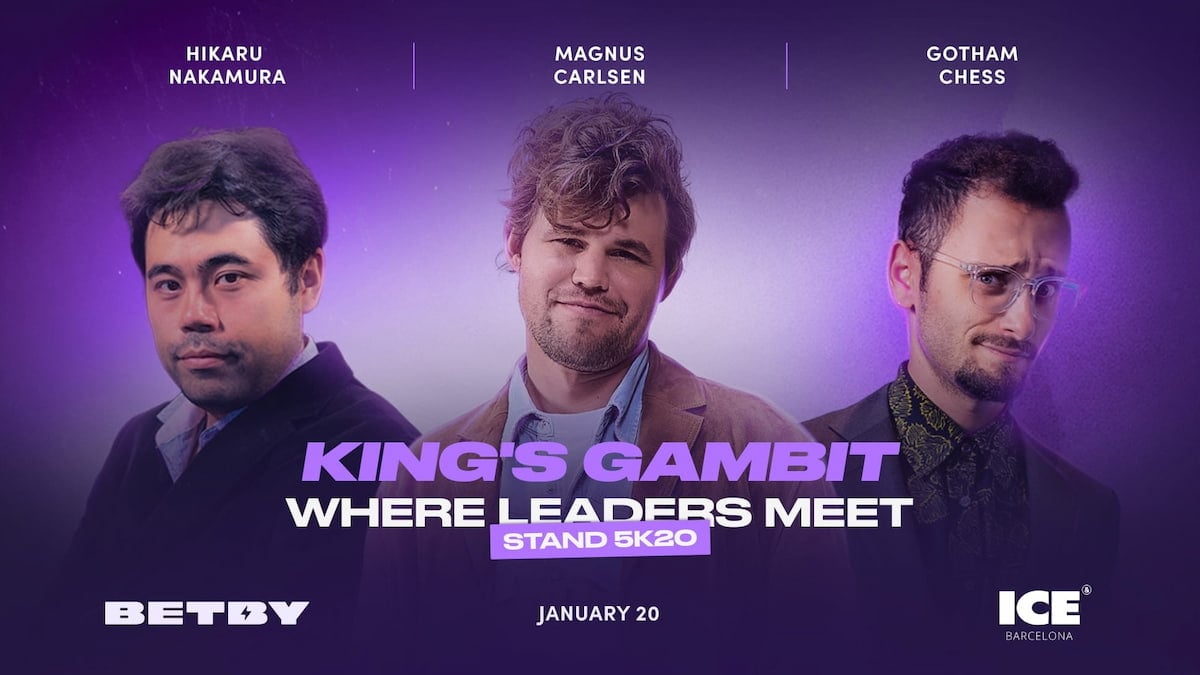
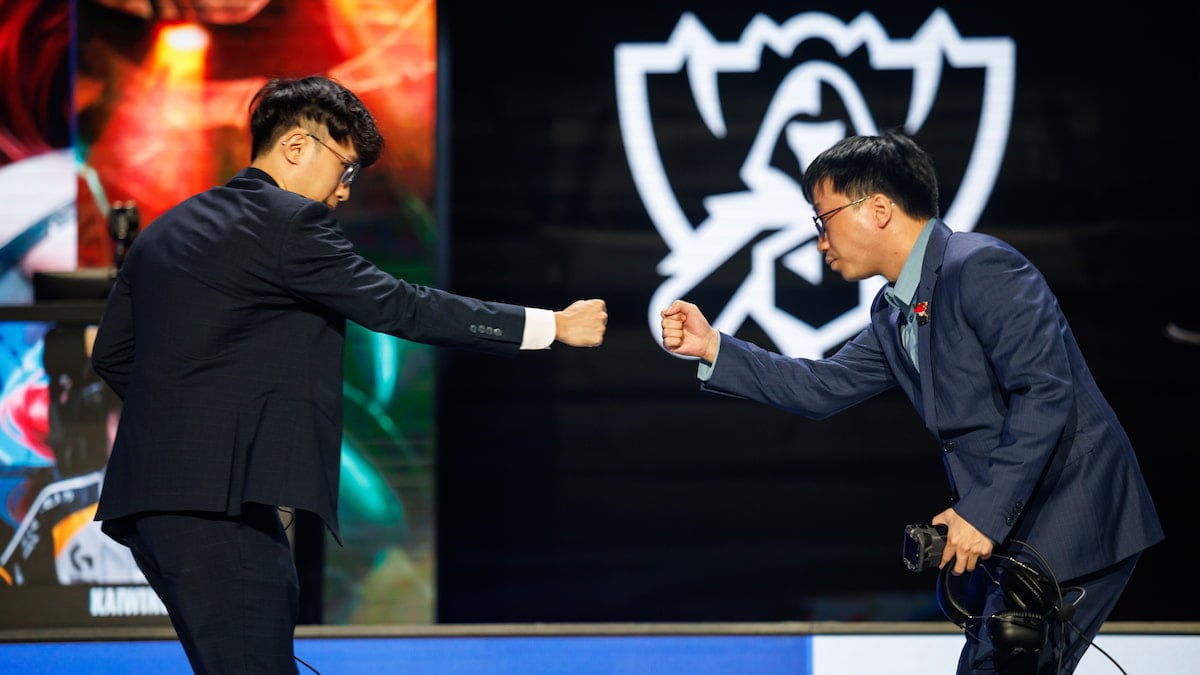
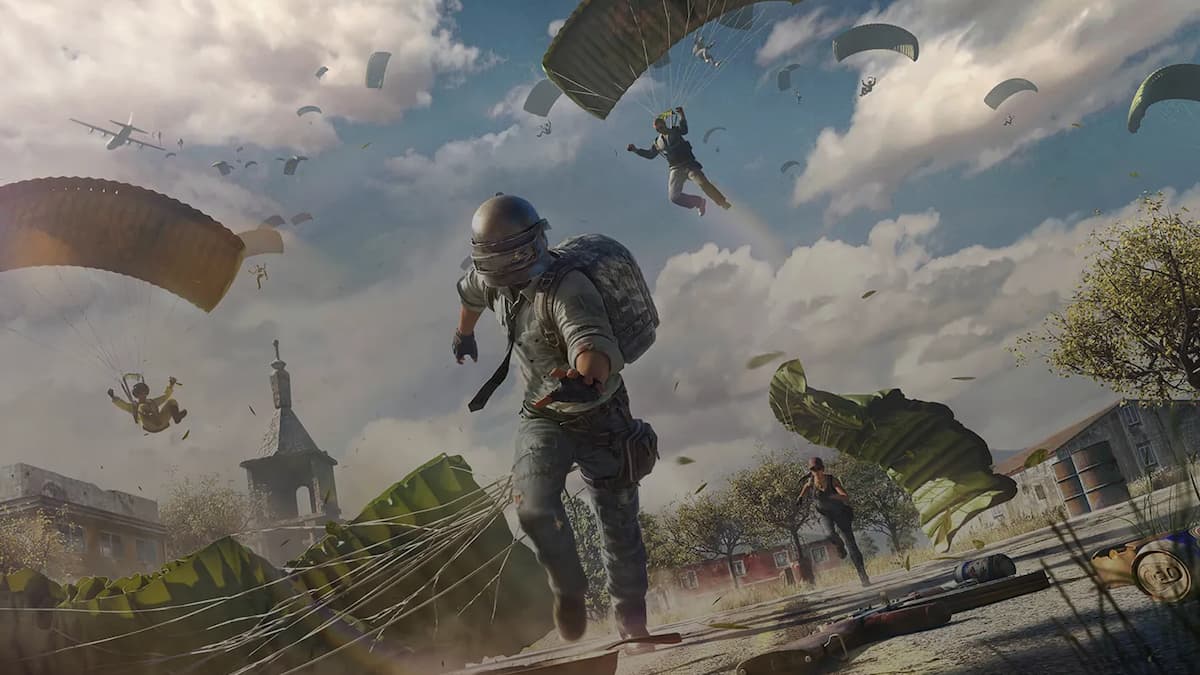

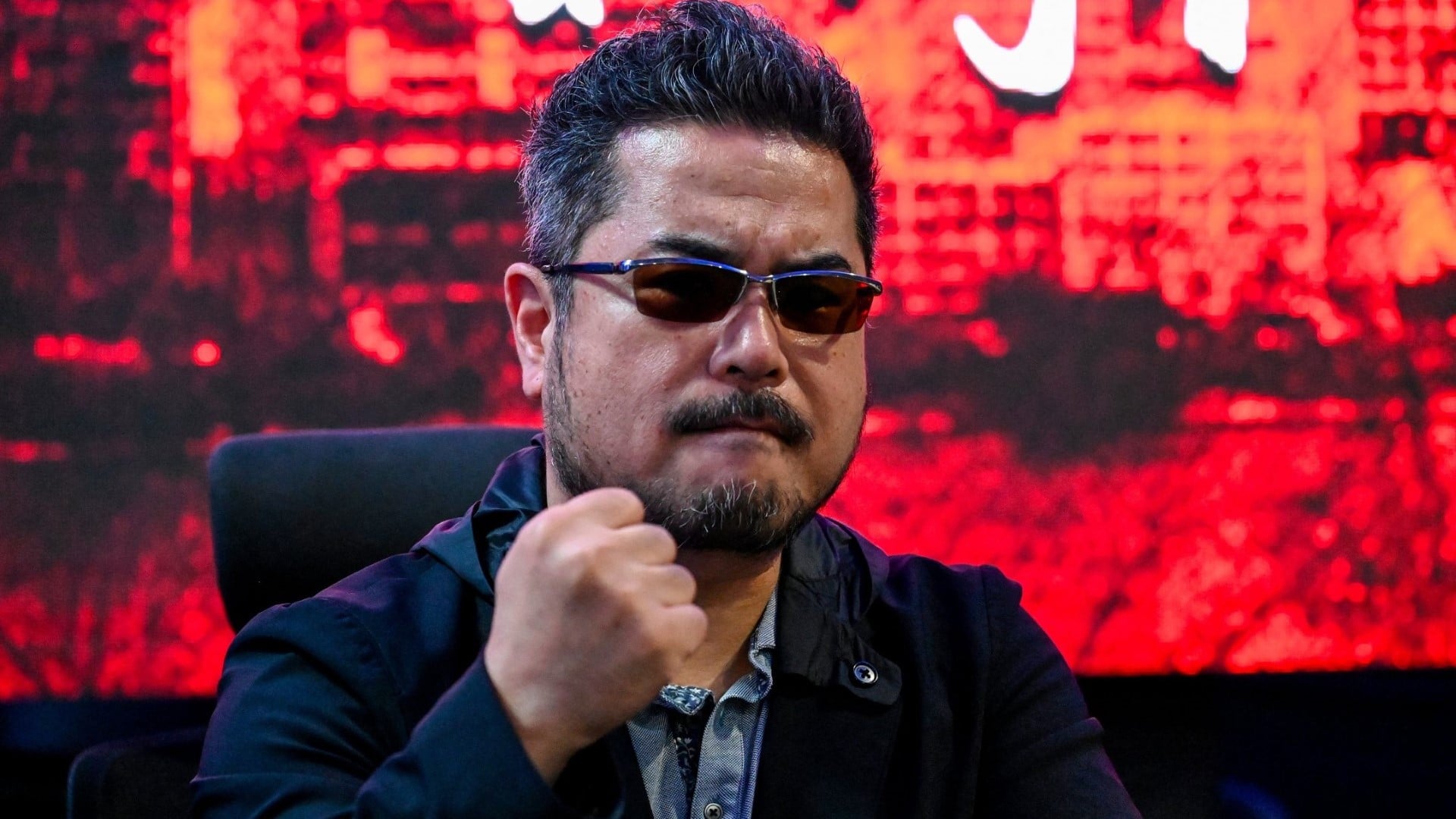
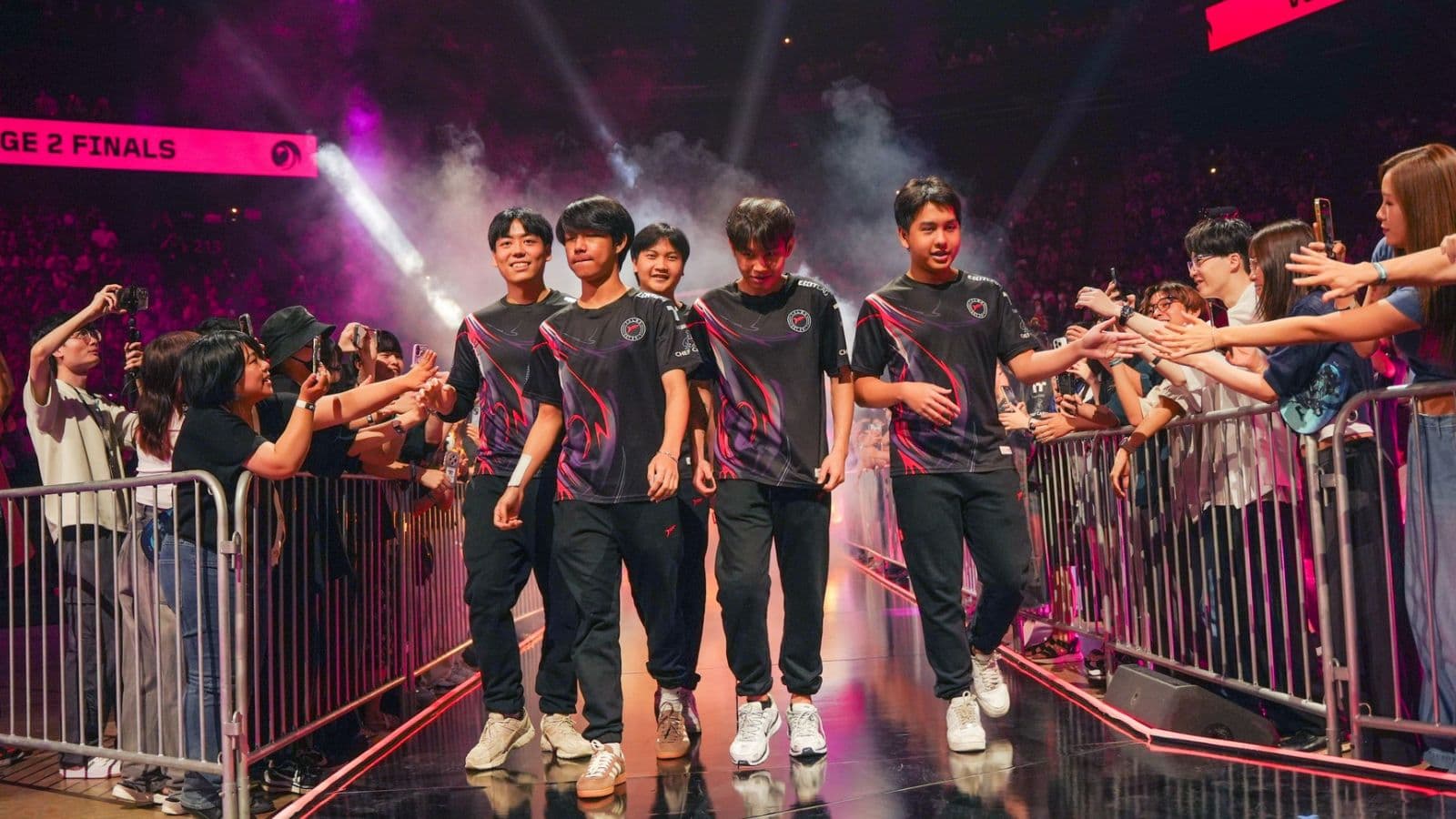

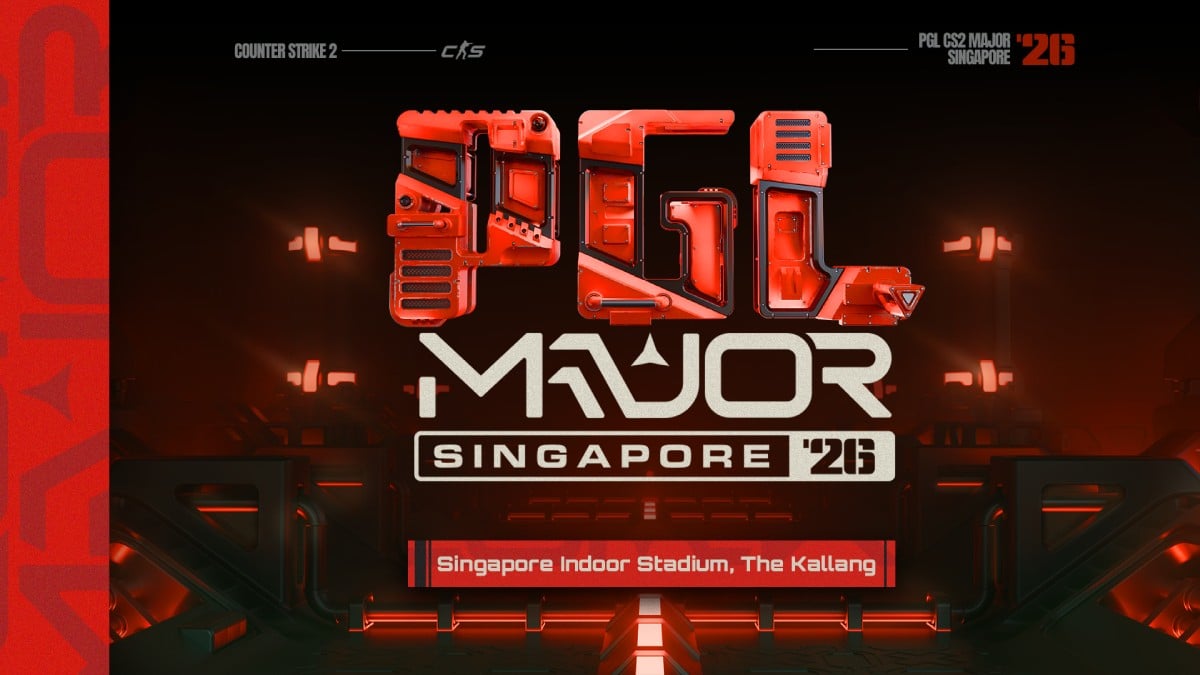


Published: Jul 22, 2015 05:13 am